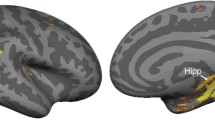Abstract
The chapters in this part deal with some aspects of current behavioral and neurobiological research on the construction of maps by animal brains. A map is an encoding of some or all of the geometric relations between locations. Map making is a fundamental part of navigation. It enables the navigator to set a course for a destination that is not currently perceived by reference to the navigator’s currently perceptible surroundings.
Access this chapter
Tax calculation will be finalised at checkout
Purchases are for personal use only
Preview
Unable to display preview. Download preview PDF.
Similar content being viewed by others
References
Blum, H.: Biological shape and visual science (Part I). Journal of Theoretical Biology 38, 205–287 (1973)
Blum, H., Nagel, R.N.: Shape description using weighted symmetric axis features. Pattern Recognition 10, 167–180 (1978)
Cheng, K., Gallistel, C.R.: Shape Parameters Explain Data from Spatial Transformations: Comment on Pearce et al (2004) and Tomassi and Polli (2004). Journal of Experimental Psychology: Animal Behavior Processes 31(2), 254–259 (2005)
Feldman, J., Singh, M.: Bayesian estimation of shape. In: Proceedings of the National Academy of Sciences, USA (2006)
Gallistel, C.R.: The organization of learning. Bradford Books/MIT Press, Cambridge, MA (1990)
Katz, R.A., Pizer, S.M.: Untangling the Blum medial axis transform. International Journal of Computer Vision 55, 139–153 (1996)
Kimia, B.B., Tannenbaum, A.R., Zucker, S.W.: Shapes, shocks, and deformation. 1. The components of two-dimenisonal shape and the reaction-diffusion space. International Journal of Computer Vision 15, 189–224 (1995)
Kovács, I., Féher, A., Julesz, B.: Medial-Point Description of Shape: a Representation for Action Coding and its Psychophysical Correlates. Vision Research 38, 2323–2333 (1998)
Leyton, M.: Symmetry, Causality, Mind. MIT Press, Cambridge, MA (1992)
Leyton, M.: A Generative Theory of Shape. Springer, New York (2001)
Loomis, J.M., Klatzky, R.L., Golledge, R.G., Philbeck, J.W.: Human navigation by path integration. In: Golledge, R.G. (ed.) Wayfinding: Cognitive mapping and spatial behavior, Johns Hopkins Press, Baltimore (1998)
Menzel, R., Greggers, U., Smith, A., Berger, S., Brandt, R., Brunke, S.: Honey bees navigate according to a map-like spatial memory. In: Proceedings of the National Academy of Sciences, vol. 102, pp. 3040–3045 (2005)
PastergueRuiz, L., Beugnon, G., Lachaud, J.P.: Can the Ant Cataglyphis cursor (Hymenoptera: Formicidae) Encode Global Landmark-Landmark relationships in addition to isolated landmark-goal relationships? Journal of Insect Behavior 8, 115–132 (1995)
Pizer, S.M., Fritsch, D.S., Yushkevich, P., Johnson, V., Chaney, E., Gerig, G.: Segmentation, Registration, and Measurement of shape Variation via Image Object Shape. IEEE Transactions on Medical Imaging 18(10), 851–865 (1996)
Siddiqi, K., Shokoufandeh, A., Disckinson, S., Zucker, S.: Shock graphs and shape matching. International Journal of Computer Vision 30, 1–24 (1999)
Thrun, S.: Robotic mapping: A survey. In: Lakemeyer, G., Nebel, B. (eds.) Exploring artificial intelligence in the new millenium, p. 29. Mogan Kaufman, San Francisco (2002)
Thrun, S., Bücken, A., Burgard, W., Fox, D., Fröhlinhaus, T., Hennig, D., et al.: Map learning and high-speed navigation in rhino. In: KortenKamp, D., Bonasso, R.P., Murphy, R.R. (eds.) AI-based mobile robots: Case studies of successful robot systems, MIT Press, Cambridge, MA (1998)
Thrun, S., Burgard, W., Fox, D.: Probabilistic robots. MIT Press, Cambridge, MA (2005)
Editor information
Rights and permissions
Copyright information
© 2007 Springer-Verlag Berlin Heidelberg
About this chapter
Cite this chapter
Gallistel, C.R. (2007). Dead Reckoning, Cognitive Maps, Animal Navigation and the Representation of Space: An Introduction. In: Jefferies, M.E., Yeap, WK. (eds) Robotics and Cognitive Approaches to Spatial Mapping. Springer Tracts in Advanced Robotics, vol 38. Springer, Berlin, Heidelberg. https://doi.org/10.1007/978-3-540-75388-9_8
Download citation
DOI: https://doi.org/10.1007/978-3-540-75388-9_8
Publisher Name: Springer, Berlin, Heidelberg
Print ISBN: 978-3-540-75386-5
Online ISBN: 978-3-540-75388-9
eBook Packages: EngineeringEngineering (R0)




